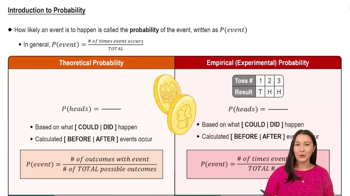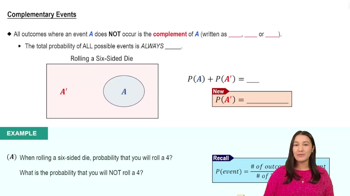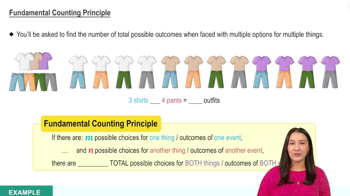Here are the essential concepts you must grasp in order to answer the question correctly.
Probability
Probability is a measure of the likelihood that a particular event will occur, expressed as a number between 0 and 1. In this context, it quantifies the chance of winning the lottery by placing a specific bet. The probability of an event A, denoted as P(A), is calculated by dividing the number of favorable outcomes by the total number of possible outcomes.
Recommended video:
Introduction to Probability
Complement of an Event
The complement of an event A, denoted as A̅ (A bar), represents all outcomes in which event A does not occur. In the lottery scenario, P(A̅) would be the probability of not winning the lottery after placing a bet. The relationship between an event and its complement is given by P(A) + P(A̅) = 1, which helps in calculating probabilities when one is known.
Recommended video:
Counting Principles
Counting principles, such as the fundamental counting principle, are used to determine the total number of possible outcomes in a scenario. In the California Daily 4 lottery, there are 10,000 possible combinations of four digits (with repetition allowed), which is crucial for calculating the probabilities of winning and losing. Understanding how to count these outcomes accurately is essential for probability calculations.
Recommended video:
Fundamental Counting Principle






